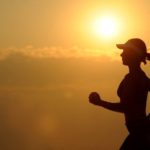Bodybuilding is a sport that sculpts the body to achieve a perfect muscle definition.
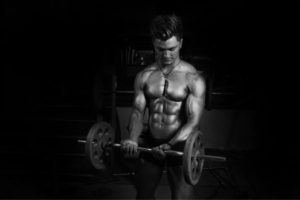
Lighting is one of the essential factors to consider in showcasing a bodybuilder physique.
Good lighting helps to highlight the muscles while creating a dramatic effect, while bad lighting can make the body looks flat and lacking definition.
This article will explore the differences between good and bad lighting in bodybuilding.
We will explain the impact of lighting on skin tone and muscle definition. Also, we will provide tips on achieving good lighting to showcase your physique better.
So you will understand how important lighting can affect the overall presentation of your shape in bodybuilding.
Good Lighting in Bodybuilding
Good lighting in bodybuilding can accentuate the muscular definition of your body while creating a dramatic effect.
You must combine natural and artificial light sources to highlight your muscle contours while bringing up good definitions to achieve them.
Natural lights are excellent for taking pictures or videos near the windows or outside.
At the same time, artificial lights are excellent for creating more dramatic effects indoors.
Good lighting is beneficial in bodybuilding, making the muscles appear more prominent and defined.
It can significantly affect perceiving muscularity and fitness for bodybuilders.
The higher the contrast between muscles and the background will make the muscles appear more defined and larger.
Good lighting can also create a more aesthetic and pleasing image.
Especially for competitive bodybuilders, showcasing their physique in photoshoots or on stage is essential.
Good lighting also enhances your skin tone, making it appear healthier and more vibrant.
It also helps your skin tone appear more tanned, as good lighting helps reduce the skin’s imperfections.
Such as blemishes and discoloration while creating a more even and attractive complexion.
Bad Lighting in Bodybuilding
Bad lighting in bodybuilding cannot accentuate your muscular definition. It can also make the appearance of your body lack definition and flat.
It is due to several reasons, such as poor lighting conditions, inadequate light sources, or improper lighting equipment placement.
It is essential to pay attention to lighting conditions, so you can make the necessary adjustment to avoid bad lighting.
Bad lighting will make the muscles appear less defined and prominent.
It is disadvantageous for bodybuilders who like to showcase their physiques on stage or in photoshoots.
Poor lighting can significantly reduce perceiving muscularity for bodybuilders.
It creates unflattering shadows and highlights, lessening the overall aesthetic of the body image.
For example, harsh overhead lighting creates unflattering shadows on your face and body, while inadequate lighting makes your appearance dull and lifeless.
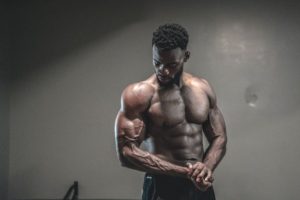
Good Lighting Vs. Bad lighting Bodybuilding
Comparing good lighting and bad lighting in bodybuilding signify that good lighting can significantly enhance muscular definition.
It also creates a more aesthetic and pleasing image of your body physique.
At the same time, bad lighting makes the muscle less defined and creates unflattering highlights and shadows.
In perceiving muscularity, good lighting has a significant impact.
The higher the contrast between your muscles and the background will make the muscles appear prominent.
It also gives more definition, while poor lighting significantly reduces muscularity.
In contrast, bad lighting creates unflattering shadows and highlights, detracting from the overall aesthetic of your image.
It is not favorable for bodybuilders participating in the competition to showcase their physique on stage or during photoshoots.
Furthermore, inadequate lighting will make the image appear dull and lifeless, diminishing the impact of your body physique.
Overall, it is a clear comparison that good lighting is more beneficial in bodybuilding than bad lighting.
It enhances your muscular definition and creates an aesthetic and pleasing image.
Therefore, it is essential to be attentive to lighting and make proper adjustments as needed to achieve better results in showcasing your body physique.
How to Achieve Good Lighting
Achieving good lighting in bodybuilding photography is a complex process. But several factors must be considered to achieve it.
It includes the type and placement of lighting equipment, the use of light modifiers, and the consideration of natural lighting conditions.
Here’s how to achieve good lighting in bodybuilding photography:
Using Multiple Light Sources
Using multiple light sources is one of the essential factors in achieving good lighting.
It includes natural and artificial light sources like softboxes, strobe lights, and beauty dishes.
With multiple light sources, it helps create a three-dimensional image while enhancing the muscular definition.
Some photographers use battery-powered studio lighting. It is a game-changer in creating professional-looking images for bodybuilding.
Also, you can control more over your lighting more when it is combined with ambient light.
It produces incredible results showcasing your body physique image to the next level.
Consider the Placement of Lighting Equipment
To achieve good lighting, the placement of your lighting equipment is crucial.
Your light source’s position creates different shadows and highlights, enhancing or detracting from your overall image.
Experiment with varying lighting setups to find the best light for your body type and skin tone.
Some photographers place their lighting equipment at a 45-degree high angle on the side of the bodybuilder model.
The position allows the bodybuilder’s muscles to create deep shadows and add depth to the overall image.
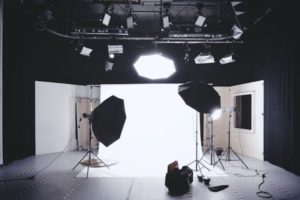
Using Light Modifiers
Using light modifiers can also help achieve good lighting. Light modifiers can soften the light, creating a more flattering image.
These may include the use of softboxes, reflectors, or diffusers.
Consider Natural Lighting Conditions
In addition to artificial lighting, it is also important to consider natural lighting conditions.
You can use natural light sources such as sunlight or window light.
Natural lights can create natural and flattering images. However, you must pay attention to the intensity of the light and its direction.
Some photographers combine natural light from the outdoors during the daytime.
They will also combine it with a high-powered studio flash unit to achieve a night-like effect.
This combination allows them to create a unique and dramatic look for bodybuilders’ shoots, which is difficult to achieve using natural light alone.
Some photographers combine natural light from the outdoors at 9 am. Also, with a high-powered studio flash unit to achieve a night-like effect.
This combination allowed them to create a unique and dramatic look for the shoot, which would have been difficult to achieve with natural lighting alone.
Overall, achieving good lighting in bodybuilding photography requires attention to detail while experimenting with different light setups.
The lighting equipment placement, natural light conditions, and light modifiers can create an aesthetic and pleasing bodybuilding image.
Conclusion
Lighting plays a significant role in bodybuilding. Understanding the differences between good and bad lighting significantly impacts the overall bodybuilder image.
Good lighting enhances the bodybuilder’s muscular definition while creating unflattering shadows and highlights.
In contrast, bad lighting can create unflattering shadows and highlights, making muscles appear less defined.
To achieve good lighting in bodybuilding photography, attention to detail is essential.
It involves using multiple light sources, considering light modifiers, and experimenting with different lighting setups to create the most flattering images.
By paying careful attention to these factors, bodybuilders can capture images that showcase their physiques in the best possible light.
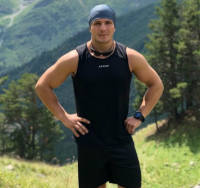
I was working as a mountain guide, probably all around the planet. One day, I met my wife in the mountains, literally on top of the world. Now, I have a beautiful family and three kids, so I don’t have much time for climbing, but sometimes I go camping with my friends. I am also into gym workouts, and I can’t imagine my life without sports.
Since I ended my professional career as a climbing guide, I’ve been giving personal classes and helping amateurs to get ready for conquering their first peaks. Also, that’s how the whole blog idea appeared.



